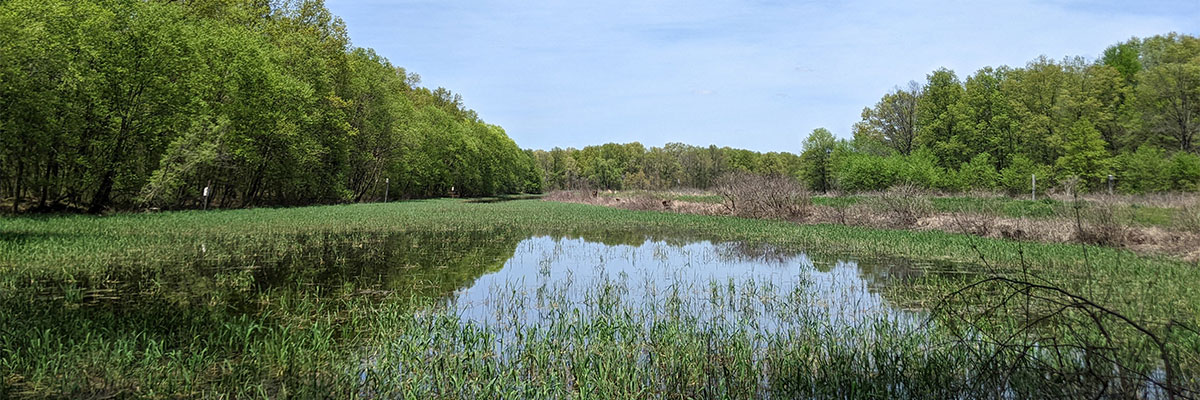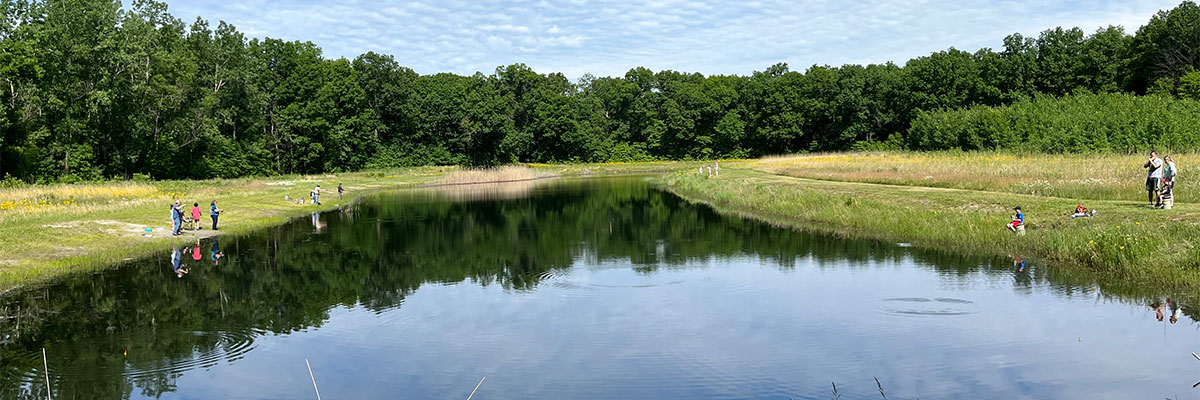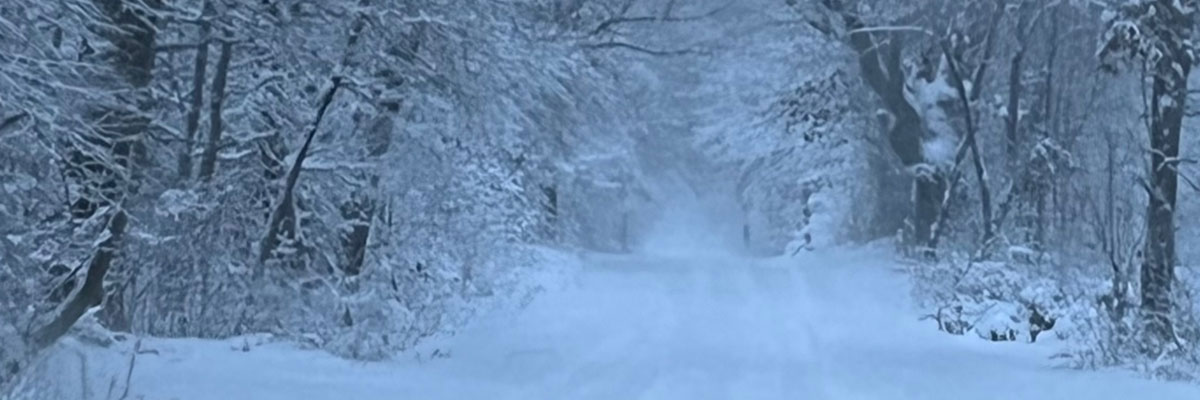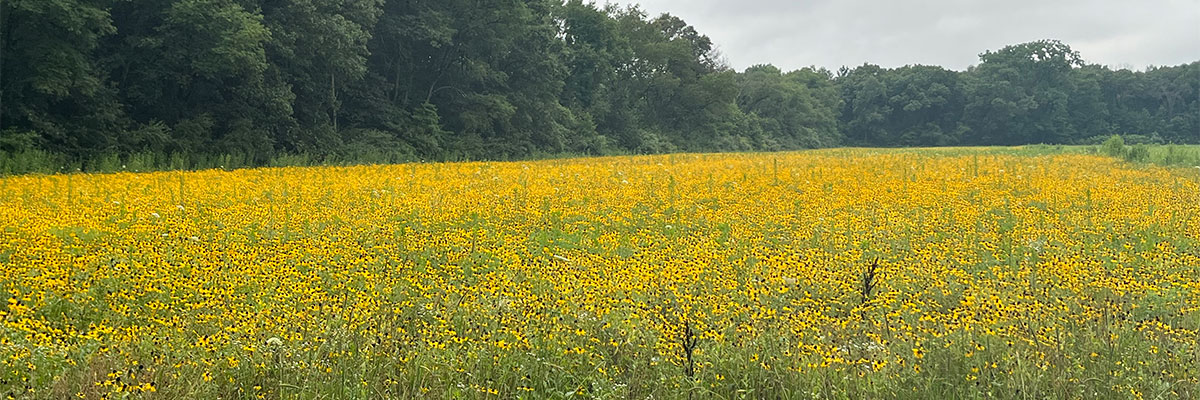- Winamac FWA Alerts
- None at this time.
Description
Winamac Fish & Wildlife Area is in Pulaski County, five miles north of Winamac. It comprises of 4,850 acres and has a wide variety of wildlife habitat types including second growth oak forest, crop, and fallow fields, small pine plantations, brushy edges, and small shallow wetlands. The property also has three shooting ranges including rifle, clay, and archery, and two walk-in fishing ponds.
In the 1930s, the U.S. Department of the Interior purchased 6,454 acres of marginal farm ground bordering the Tippecanoe River and Hwy. U.S. 35 to provide jobs for the residents in the community. The land was developed as a recreational demonstration area, with picnic shelters, cabins, and campgrounds constructed mostly along the river. In 1943, the property was transferred to the State of Indiana to be operated as Tippecanoe River State Park. In 1959, 3,710 acres of land west of Hwy U.S. 35 were transferred to the Division of Fish & Game (now Division of Fish & Wildlife). Additional land acquisition has increased Winamac FWA to its present acreage.
Some of the most popular activities at Winamac FWA include shooting and archery at the ranges, hunting, fishing, trapping, and wildlife viewing.
Most of the revenues used in land acquisition, development, operation, and maintenance of Winamac FWA are derived from the sale of hunting, fishing, and trapping licenses. Funds are also received from the federal Pittman-Robertson and Dingell-Johnson programs to aid fish and wildlife restoration. These funds are derived from taxes levied on sport hunting, shooting, and fishing equipment. Indiana hunters and anglers are proud to provide this property for the enjoyment of all people.
- Amenities
- Pit toilets are available at the office and shooting range.
- A self-registration area is open 24/7 at the office.
- Staff are available most weekdays and some weekends during hunting seasons.
Popular activities
All hunters, range users, and dog runners are required to sign in and obtain the appropriate one-day access permit before entering the field at this property. The one-day permit card must be completed and returned to a self-service booth, drop box, or property office before you leave.
All other visitors are encouraged to obtain a miscellaneous one-day access permit before entering the field. The one-day access permit should be kept with you while visiting, then completed and returned to a self-service booth, drop box, or the office before you leave. The information you provide will help us identify ways to improve Indiana’s FWAs for all users. We appreciate your patience in taking the extra time to complete the permit. Your feedback and comments are valuable to us.
- Fishing
- Winamac has two 2-acre ponds that are open for fishing. You can find the locations on the Where to Fish map.
- Popular fishing species include bluegill, channel catfish, and largemouth bass.
- Access to the ponds is walk-in only. Parking is available at the office.
- Property maps, fishing and hunting regulations, and recreation guides are provided in the self-serve station kiosk in the office. A pond depth chart map, property rules, state notices, and current programs are also provided at the self-serve station posted on the wall.
- See Fishing Regulations for details.
- Hunting
- Hunting for deer, turkey, rabbit, quail, squirrel, crow, woodcock, dove, waterfowl, reserve put-and-take pheasant, and furbearers is common at Winamac FWA.
- Disabled hunters may obtain a property access permit. Contact the office for additional information on how to obtain a permit.
- Special youth hunts may be offered. Please call the office for details.
Dove
- Dove reserved hunts occur on Sept. 1 and Sept. 2 each year. A standby draw will be conducted to fill remaining unclaimed hunting opportunities. Successfully drawn hunters and standby hunters must be present and registered by 11 a.m.
- Drawing needs and hunting hours for days after Sept. 2 will be determined based on dove numbers and hunter demand.
- Dove hunters are restricted to 50 shells per day. Shells must be non-toxic. Lead shells are not permitted for dove hunting.
Deer
- Deer hunting is open for self-service registration. A maximum of 160 deer hunters are allowed on the property per day, only during firearm and muzzleloader seasons. Maximum hunter limits are typically only met on the opening day of deer firearms and muzzleloader seasons. A maximum of 200 deer hunters allowed on the property only during archery season.
- On opening season weekends, the office opens at 5 a.m. to register deer hunters. The self-service area is open for deer-hunting registration 24 hours a day for all other deer-hunting-season days.
- Deer tree stands and ground blinds may be used and left unattended from noon, Sept. 15 through Jan. 10. Tree stands and ground blinds must be legibly marked in English with either the owner's DNR customer identification number or the owner’s name, address, and telephone number. A fastener used in conjunction with a tree stand and a tree or pole climber that penetrates a tree more than ½ inch is prohibited (i.e., anything that penetrates a tree more than a ½ inch is prohibited, e.g., screw-in steps and screw-in bow and gun hangers).
- Antlerless deer cannot be taken with a firearm during firearms season at Fish & Wildlife areas, including Winamac FWA.
Pheasant
- Paid put-and-take pheasant hunts begin the Saturday before Thanksgiving and end the Sunday after Thanksgiving. Reservations may be claimed from 8 a.m. to 3:30 p.m. daily. Roosters only. Online pre-registration required and begins the second Wednesday of each September at 7 a.m. EST.
Turkey
- Spring Turkey is a reserved hunt. Hunters must claim their spot between 5 a.m. and 5:30 a.m. ET. 16 hunters are allowed per day.
- Applications are accepted online from Feb. 19 to March 19.
- A standby drawing will be held at 5:30 a.m. every day of the season. Hunters who would like to enter the daily standby drawing must register daily between 5 a.m. and 5:30 a.m.
Quail
- Quail hunting is open on the property on the opening day of the season and every Saturday, Sunday, and Wednesday through the Sunday after Thanksgiving.
- A drawing at the check station will be conducted each hunt day at 8:30 a.m., and all individuals or parties must be registered before then. A maximum of three parties consisting of no more than three hunters per party will be allowed to hunt each day.
- Hunting hours will be 9 a.m. to 4 p.m. The bag limit for quail is two per day per hunter.
Waterfowl
- Waterfowl hunting is offered but is limited due to the small number of wetlands.
- Shooting range
- There are three public shooting ranges including rifle, shotgun, and archery.
- Rifle range has covered shooting stations at 25, 50, 100, and 200-yard ranges. Only paper targets properly posted on provided target bases are permitted and must be provided by users.
- Shotgun range is clay targets only. User must provide clay targets and throwers.
- Archery range provides shooting stations for 10, 20, 30, and 40 yards. Layered foam targets provided.
- Hours:
- March – December: 9 a.m. – 5 p.m. ET Friday – Tuesday
- January – February: 9 a.m. – 5 p.m. ET Friday – Sunday
- Closed: Thanksgiving Day, Christmas Day, and New Year’s Day.
- See the Fish & Wildlife Area Shooting Ranges webpage for more details.
- Trapping
- Random drawing for trapping season will be conducted the first Saturday in October at 10 a.m. ET at the main office.
- All trapping is wetland only except for dog proof traps with pull-type triggers. Special restrictions apply.
- Please contact the office for complete list of trapping rules.
- View statewide trapping regulations in the Hunting & Trapping Guide.
- Wildlife watching & birding
- The 4,850 acres of marsh, grasslands and wooded habitat areas attract a variety of species. Common species that can be seen are deer, turkey, woodcock, upland birds, and songbirds. The endangered Massasauga rattlesnake has also been known to inhabit the area.
- Spring, summer, and fall months are the most common times to see deer, turkey, upland birds, and songbirds.
- All users must park in designated parking areas located throughout the property.
More activities
- Biking
- Bicycling is allowed on all paved and gravel roads that are open to vehicle travel.
- There are no designated biking trails available on this property.
- Mountain biking and off-road travel is prohibited.
- Dog running
- Dog running is restricted to Area 4, 4B, East and West Ponds.
- Dog running is not allowed during spring turkey season from midnight to 1 p.m.
- Foraging
- Mushrooms, berries, and nuts may be gathered.
- Removal of plants, animals, artifacts, and rocks are prohibited.
- No visitors are allowed on the property during spring turkey season until after 1 p.m.
- Hiking & walking
- A walk-in path to fishing ponds starts at the office.
- There are miles of disked fire lanes and mowed access paths through each area of property.
- Hiking during hunting season is permitted. Wearing a hunter orange hat and/or clothing is advised for safety.
- Inquire at the office for what trails are available when you plan on visiting.
- Volunteering
- You can volunteer alone or in small groups at this property. Some activities include trash pick-up, hunting and fishing programs, invasive plant removal, shooting events, and more. Call the property office for details.
Other properties managed by this office
- Bob Kern Nature Preserve is a 168-acre property. No check-in procedures are required. Parking in designated area only. This area is primarily focused on waterfowl, small game, wild turkey, and fishing. Hunting is by archery only. Trapping opportunities are allocated through a draw on the first Saturday in October of each year at the Winamac FWA office.
- Eller Pond Wetland Conservation Area is a 39-acre property. No check-in procedures are required. Parking in designated area only. This area is primarily focused on waterfowl. The pond is shallow, making fishing quality low. No boat trailer launch site is provided. Fishing and frog hunting are prohibited during waterfowl season. All other types of hunting are prohibited.
- Hufford Wildlife Trust Area is a 135.6-acre property. No check-in procedures are required. Parking in designated area only. This area is primarily focused on small game, turkey, and deer hunting. Trapping opportunities are allocated through a draw on the first Saturday in October of each year at the Winamac FWA office.
- Judy Burton Nature Preserve is a 130-acre property. No check-in procedures are required. Parking in designated area only. This area is primarily focused on waterfowl, small game, wild turkey, and fishing. Trapping opportunities are allocated through a draw on the first Saturday in October of each year at the Winamac FWA office.
- Manitou Islands Wetland Conservation Area is a 129-acre property. No check-in procedures are required. Parking in designated areas only. This area is primarily focused on waterfowl, small game, wild turkey, and fishing. Trapping opportunities are allocated through a draw on the first Saturday in October of each year at the Winamac FWA office.
- Manitou Nature Preserve is a 207-acre property. No check-in procedures are required. Parking in designated areas only. This area is primarily focused on waterfowl, small game, wild turkey, and fishing. Trapping opportunities are allocated through a draw on the first Saturday in October of each year at the Winamac FWA office.
- Maxinkuckee Wetland Conservation Area is a 76-acre property. No check-in procedures are required. Parking in designated area only. This area is primarily focused on waterfowl. Small boats and canoes will allow hunters to reach the wetland area from parking lot. Small game, turkey, and deer hunting is very limited due to the amount of upland ground. Trapping opportunities are allocated through a draw on the first Saturday in October of each year at the Winamac FWA office.
- Menominee Wetland Conservation Area is a 958-acre property that includes 10 individual parcels. No check-in procedures are required. Parking in designated areas only. This area is primarily focused on waterfowl, small game, wild turkey, and deer. Trapping opportunities are allocated through a draw on the first Saturday in October of each year at the Winamac FWA office.
To learn more about the location and types of activity on these properties, view the Where to Hunt map.




